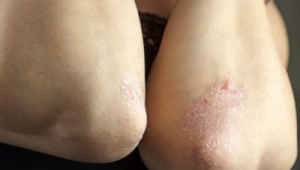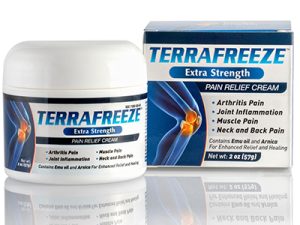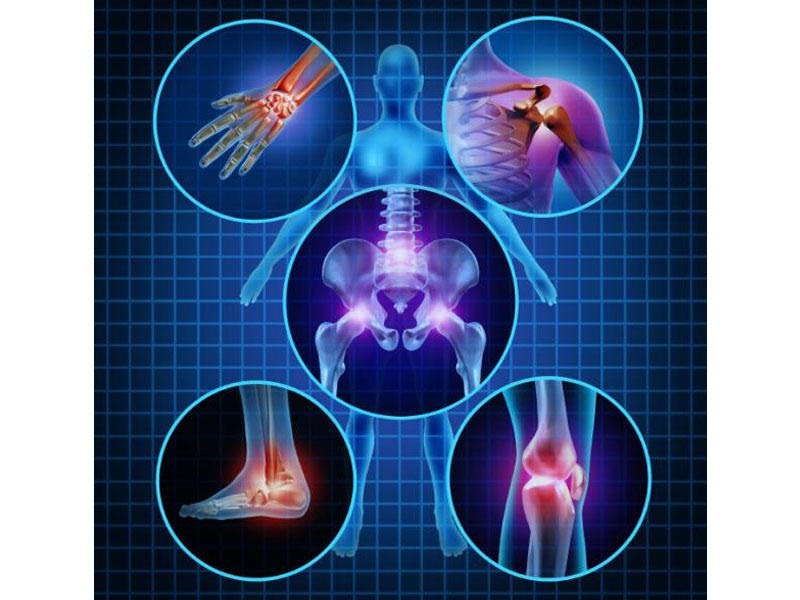The chronic autoimmune skin disease known as “psoriasis” is a precursor to a specific form of arthritis called “psoriatic arthritis.” Not everyone suffering from psoriasis will develop this arthritis, but around 30% of them will develop it. The symptoms of psoriatic arthritis include joint pains, swelling, and stiffness. Some sufferers may even experience fatigue and nail abnormalities.
Psoriatic arthritis should be treated as soon as the symptoms and flare-ups present themselves. If you wait longer than two years, your joints may become permanently damaged. The basic symptoms will come and go inconsistently. When the symptoms suddenly come back, this is called a flare-up. The types of symptoms you can expect from this disorder include joint pain, joint stiffness, swollen tendons, fatigue, swollen toes, swollen fingers, lack of movement, and eye redness.
Causes and Triggers
 There are various reasons why people develop psoriatic arthritis. Someone is more susceptible to obtaining this skin disorder if they currently suffer from obesity, nail disease, scalp psoriasis, and skin injuries. The biggest triggers that cause flare-ups to the skin include stress, medication, and skin injuries.
There are various reasons why people develop psoriatic arthritis. Someone is more susceptible to obtaining this skin disorder if they currently suffer from obesity, nail disease, scalp psoriasis, and skin injuries. The biggest triggers that cause flare-ups to the skin include stress, medication, and skin injuries.
However, if your psoriasis was caused by an overactive immune system, then chances are this issue will also cause your psoriatic arthritis. That is why the two skin disorders are so closely linked together.
Home Treatments
The treatments of psoriatic arthritis are debatable. There is still a lot the medical community does not understand about psoriasis and psoriatic arthritis. The best thing you can do is keep your skin moisturized so that you can prevent dryness. If you purchase an over-the-counter moisturizer, it is best to choose one that is fragrance and paraben free that is made specifically for sensitive skin.
There are some natural habits you should develop to treat your symptoms further. For instance, exercising and losing weight are known to greatly reduce the triggers of psoriatic arthritis. It is also best to avoid alcohol and tobacco. And, of course, get plenty of rest each night.
Doctor Treatments
 If you have tried the home treatments and you’re still experiencing flare-ups and symptoms of this skin disorder, then you need to see a doctor. They take joint pain very seriously and will probably run a variety of tests on you, such as a physical exam, X-ray, blood test, and an MRI scan if needed. A dermatologist may initially diagnose your psoriasis based on the skin symptoms, but they don’t specialize in joint disorders. You will need to see a rheumatologist for those.
If you have tried the home treatments and you’re still experiencing flare-ups and symptoms of this skin disorder, then you need to see a doctor. They take joint pain very seriously and will probably run a variety of tests on you, such as a physical exam, X-ray, blood test, and an MRI scan if needed. A dermatologist may initially diagnose your psoriasis based on the skin symptoms, but they don’t specialize in joint disorders. You will need to see a rheumatologist for those.
If the joint pains are mild, the doctor may recommend that you take ibuprofen or some other over-the-counter pain reliever. But if you are experiencing severe joint pain, then they might prescribe a corticosteroid medication. A steroidal anti-inflammatory drug which will temporarily reduce your pain and any swelling that you have. You cannot take this for too long, though, because it can negatively affect your immune system.
Topical Pain Creams
Topical pain relief creams are becoming a more popular and common choice for diminishing the joint pain associated with psoriatic arthritis. They give relatively quick pain relief without the adverse side effects of oral medications or corticosteroid medication. Providing a more natural approach to pain relief from joint inflammation and stiffness. When choosing the right topical pain relief cream, look for ingredients that are all natural and avoid those with artificial ingredients that will only cause more harm.

It is important to note that topical pain relief creams should be used only with the advice of your doctor, specifically if you are experiencing an active psoriasis skin rash. An all-natural topical pain relief cream that is recommended by many is TERRAFREEZE™ extra-strength pain relief cream.
Overall, there is no cure for this disorder, but there are clear benefits to taking care of your skin and body the best you can and finding a pain management solution that works best for you and your symptoms. Then, perhaps, you can send psoriatic arthritis into remission.

